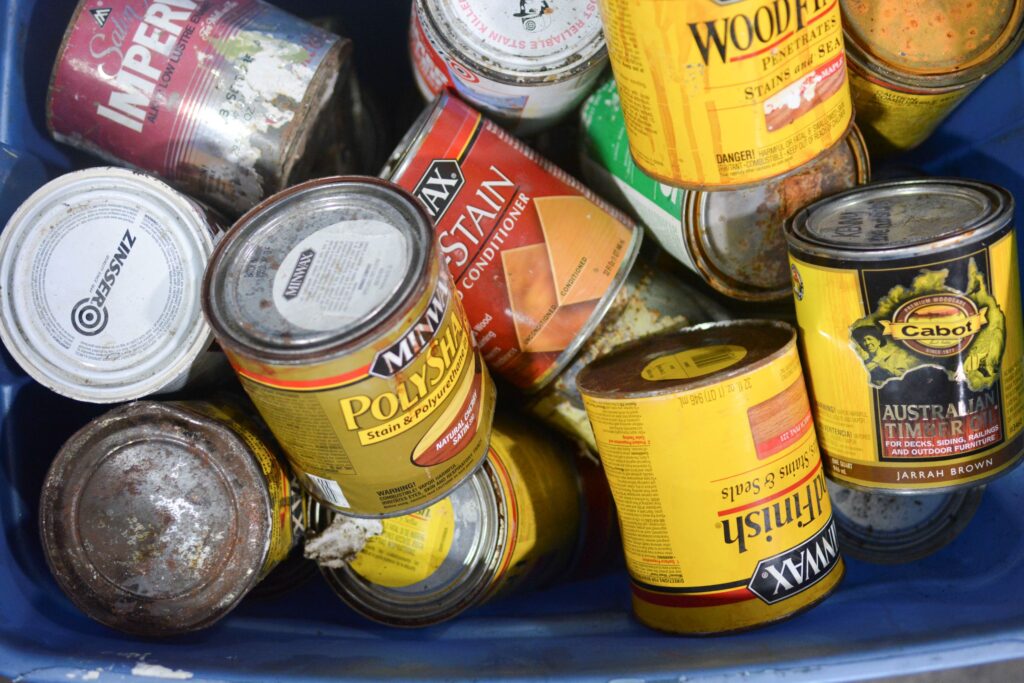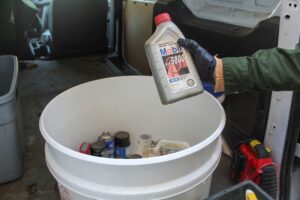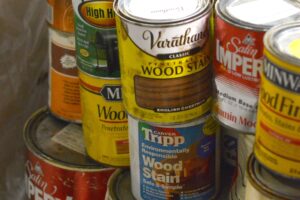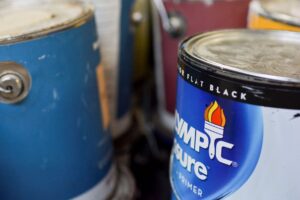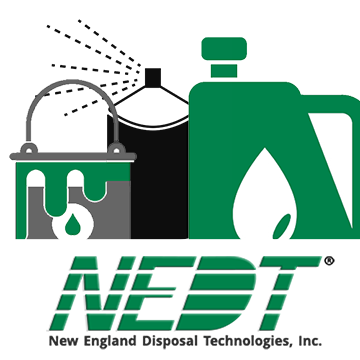As one of the most common household hazardous products inside homes in America and definitely the top item brought into collections centers in Massachusetts, paint represents a problem for homes. Leftover paint from projects and painting the house gathers dust, chemically breaks down, and poses fire hazards. Today, let’s talk about dealing with oil-based paints and stains, including what makes them toxic, how to store and handle them, and how to dispose of them. For information on latex paint, use the link below:
Hazards
- Oil-based paints and stains contain volatile organic compounds (VOCs) that vaporize at room temperature; Vapors may be toxic when inhaled.
- Oil-based paints and stains are flammable – store away from sources of sparks or heat to help avoid household fires.
- Older paint may contain lead or other heavy metals as part of the pigment and can also contain anti-fungal chemical additives that can make it hazardous.
- These hazards are for oil-based paints, stains, finishes, and similar oil-based products.
Handling
- Containers should be opened in a well-ventilated area. Wear an appropriate respirator or cartridge mask when pouring off or mixing large volumes of oil-based paints.
- Identify leftover paint as latex or oil-based. Latex paint is labeled as such or has instructions on how to clean it up with water. Oil-based paint may be labeled “alkyd,” “contains solvents,” “clean up with mineral spirits,” or “combustible.”
- Pourable paint may be reused unless it contains lead. To test if the paint is still good, paint a small test area on a clean surface and allow it to dry for 48 hours. Place a piece of masking tape over the paint and pull it off. If the paint comes off on the tape, the paint is no longer good.
- To store usable paint for long periods of time, cover the opening of the paint can with a piece of plastic wrap and seal the lid tightly. Store the can upside down and away from heat.
- Do not put liquid paint in the trash or down the drain.
- Do not dry out oil-based paints, stains, or wood finishes to dispose of in the trash. The volatile chemicals are air pollutants.
Management Options
For surplus paints and stains:
- Take to the municipal surplus paint collection program, if available.
- Hardened oil-based paint can be disposed of in the trash in small amounts.
- If no reuse or recycling option is available or convenient for paints, they should be taken to a Household Hazardous Products Collection Center.
Paints or stains that contain lead, mercury, chromium, or cadmium
- Do not use up, and do not give away. Toxic metals will remain in the painted item.
- Take to Household Hazardous Products Collection Center.
Empty paint cans:
- Empty paint cans may be accepted in community scrap metal programs.
- If recycling is not feasible, empty paint cans can be disposed of in the trash. Leave the lids off so the hauler can see that the can is empty.
This information was brought to you by the Massachusetts Department of Environmental Protection (MassDEP) and NEDT. For more information, including links to their guides, visit our Fact Sheets & Links page, and make sure to check out our NEDT Blog and Household Hazardous Products Resources for more in-depth information.
